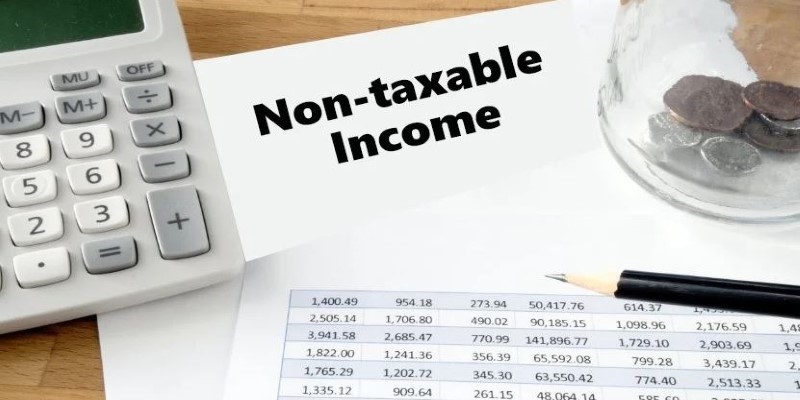Tax Help for Seniors and the Disabled: Insights from IRS Publication 524
Dec 13, 2024 By Susan Kelly
Navigating the intricacies of the U.S. tax system can be particularly daunting for seniors and individuals living with disabilities. Recognizing the unique financial challenges faced by these groups, the Internal Revenue Service (IRS) provides specific tax relief options designed to alleviate some of their burdens. One such provision is detailed in IRS Publication 524, which outlines the Credit for the Elderly or the Disabled.

This credit reduces the tax burden for eligible people. Therefore, it is very important to know what makes you eligible, at what income levels, and how to apply for it, especially for those who become eligible. The following guide represents IRS Publication 524 and its essential facts in the context of determining eligibility and how to access it to potentially qualify for this invaluable credit.
Understanding IRS Publication 524 and Its Importance
IRS Publication 524 contains a full explanation of the Credit for the Elderly or the Disabled, a non-refundable tax credit available to eligible individuals. In its design, it was apparently meant to provide relief to persons 65 years of age or older or permanently and totally disabled; it was to decrease the total burden of taxes and thereby augment their disposable income.
The importance of IRS Publication 524 lies in that it helps to explain in detail what makes one eligible, how they can be calculated, and even the forms needed to claim the credit. Hence, by understanding this well, eligible taxpayers are certain not to lose out on a potential tax saving, which may amount to thousands in their gross finances. Whether you are a retiree and wish to stretch the dollar in your retirement or a person with a disability who is entitled to government aid, then you have access to IRS Publication 524, which renders these tax benefits through eligibility criteria to you.
Eligibility Criteria: Who Qualifies for the Credit?
Certain conditions related to age, disability status, and income must be met to qualify for the Credit for the Elderly or the Disabled. Understanding these criteria is the first step in determining eligibility.
Age Requirement:

Individuals must be aged 65 or older by the end of the tax year to qualify based on age. For example, to qualify for the 2023 tax year, you must have turned 65 on or before December 31, 2023. This criterion ensures that the credit specifically targets seniors who may have limited income sources.
Disability Requirement:
Those under 65 can still qualify for the credit if they are permanently and totally disabled. This means the individual cannot engage in any substantial gainful activity due to a physical or mental condition, and a physician must certify that the disability is expected to last at least 12 months or result in death. This provision acknowledges the additional financial challenges faced by individuals who are unable to work due to their disabilities.
Income Limits:
Eligibility also depends on income levels, specifically the Adjusted Gross Income (AGI) and nontaxable income. These limits vary based on filing status:
- Single, Head of Household, or Qualifying Widow(er): AGI must be $17,500 or less, and nontaxable Social Security or other nontaxable pensions must be $5,000 or less.
- Married Filing Jointly (both spouses qualify): AGI must be $25,000 or less, and nontaxable income must be $7,500 or less.
- Married Filing Jointly (one spouse qualifies): AGI must be $20,000 or less, and nontaxable income must be $5,000 or less.
- Married Filing Separately: The credit is available only if you lived apart from your spouse for the entire year. AGI must be $12,500 or less, and nontaxable income must be $3,750 or less.
These income thresholds are subject to change, so it is essential to consult the latest IRS guidelines or a tax professional to ensure accurate and up-to-date information.
Calculating the Credit: Step-by-Step Process
Determining the exact amount of the Credit for the Elderly or the Disabled involves a multi-step calculation that takes into account your filing status, age or disability status, and income levels. Here's a simplified breakdown of the process:
Determine Your Initial Amount: The IRS assigns a base amount based on your filing status. This amount serves as the starting point for the credit calculation.
Subtract Nontaxable Income: From the initial amount, subtract any nontaxable income you receive, such as Social Security benefits, pensions, annuities, or disability benefits. This step ensures that the credit is targeted towards those with lower taxable incomes.
Subtract Excess AGI: Calculate half of your AGI that exceeds the initial amount. Subtract this figure from the remaining amount after nontaxable income has been deducted. This calculation further refines the credit based on your overall income level.

The result of these calculations is your tentative credit amount. It's important to note that the Credit for the Elderly or the Disabled is nonrefundable. It can only reduce your tax liability to zero but cannot result in a refund if the credit exceeds your tax owed.
Claiming the Credit
To claim the Credit for the Elderly or the Disabled, you must file Form 1040 or 1040-SR and attach Schedule R, "Credit for the Elderly or the Disabled." Schedule R guides you through the calculation process and helps determine your eligibility.
If you are under 65 and claiming the credit based on a disability, you must also include a physician's statement certifying your permanent and total disability. This statement should be attached to your tax return unless the physician's statement has been submitted a year before and the IRS has a record of it.
Conclusion
The Credit for the Elderly or the Disabled is a valuable provision designed to offer financial relief to qualifying individuals. By understanding the eligibility criteria, income limits, and application process outlined in IRS Publication 524, you can take full advantage of this credit and potentially reduce your tax liability. Always consult the latest IRS publications or a tax professional to ensure you have the most current information and guidance tailored to your specific situation.








